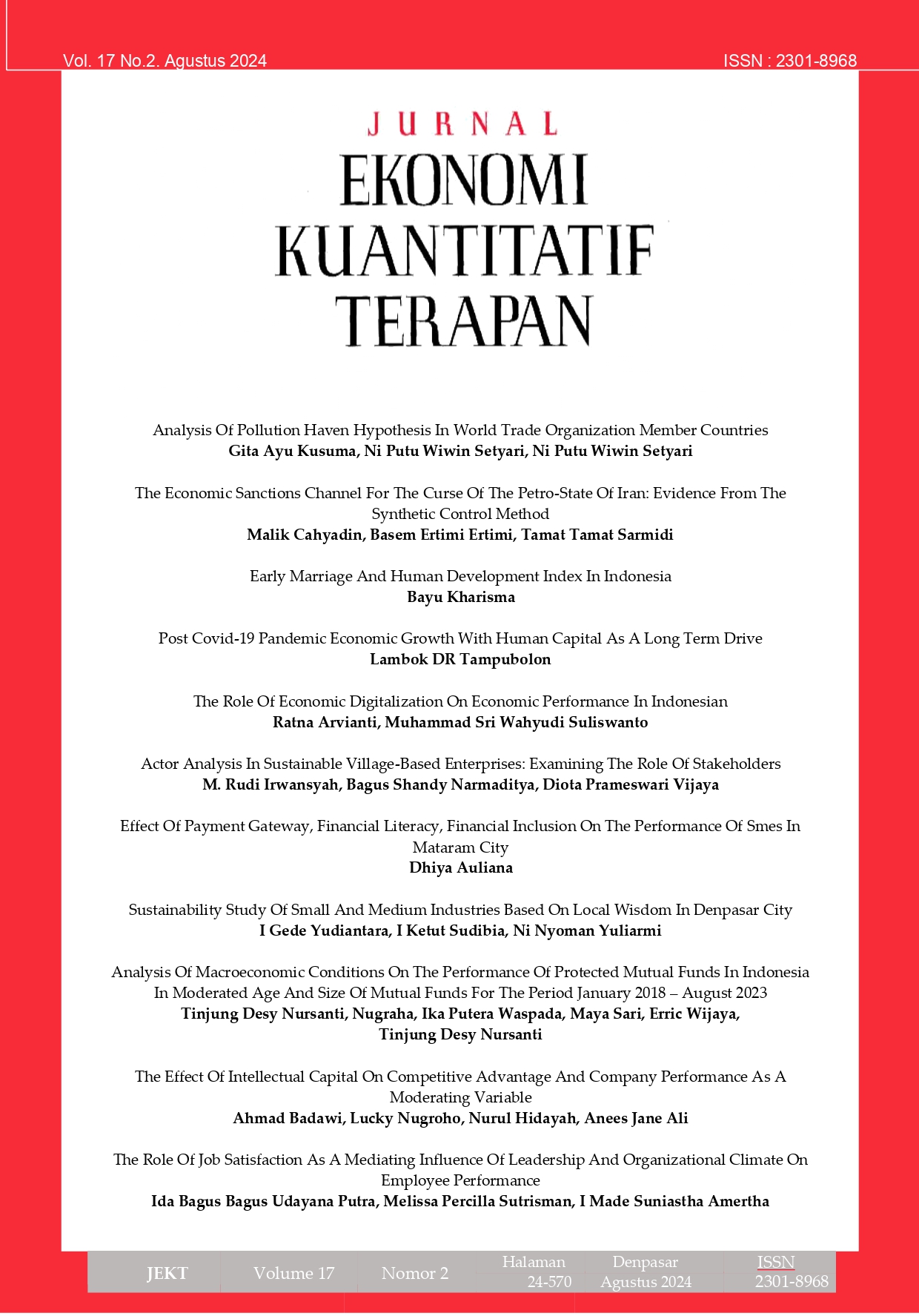Post Covid-19 Pandemic Economic Growth With Human Capital As A Long Term Drive
Abstract
The latest direction in development economics research both at home and abroad is starting to reduce the use of convoluted analytical models. Using too many variables but with unclear causality will actually complicate the analysis and produce results that are not necessarily good and correct. There are quite a lot of scientific work findings that use dozens of variables, with statistically significant results, but if you examine the relationship many questions arise such as "How can x have a relationship with y?" or “Doesn't y affect x, and not vice versa?” or what is known as reverse causality. Causality between variables must be supported by a strong and in-depth theoretical basis—not to show that the increase in the number of giraffes in Australia affects Indonesia's GDP—and the existence of this relationship must be free from sources of bias.
Downloads
References
Technical Change and Wage Inequality, The Quarterly Journal of Economics, November 1998.
Aghion, P and Howit, P., A (1992)., Model of Growth Through Creative Destruction.,
Econometrica, Vol.60, no.2, pp 323-351.
Anderson, L., W., (2021)., Schooling Interrupted: Educating Children and Youth in the Covid-19
Era., c e p s Journal, Vol.11 , doi: 10.26529/cepsj.1128
Asian Development Bank (2021)., Asian Development Outlook 2021 Update, September 2021
Asian Productivity Organization (2021)., APO Productivity Data Book 2021
Badan Pusat Statistik, (2021)., Berita Resmi Statistik
Blanchard, O., (2017)., Macroeconomics, 5th ed. Pearson
Ferreira, PV., Reis, NR., Pinto, CF., (2017)., Schumpeter’s (1934) Influence on
Entrepreneurship (and Management) Research, Global Economic Management Review, Doi: 10.14211/regepe.v6i1.483
HSBC Global Research (2021)., Asian Economics: Looking for Steadier Ground
IMF (2021)., World economic outlook: Recovery During a Pandemic
Nishimura, Y., (2020). New normal and new economy: a new growth engine for Tiongkok,
International Journal of Economic Policy Studies, Springer, Japan Economic Policy Association (JEPA)
OECD (2019): PISA 2018 Insights and Interpretations
Roomer., D (2012)., Advanced Macroeconomics, 4th ed., McGraw Hill
Roomer, P.M., (1994)., The Origin of Endogeneous Growth, Journal of Economics Perspectives,
Vol. 8 no. 3 pages 3-22
Saparso, Winoto, H., Wahyoedi, S., (2019), Human Capital Investment and Economic
Competitiveness (Indonesian Competitiveness among ASEAN Countries), Business and Economic Research Vol. 9, No. 3
Seliger, B., (2010)., Theories of Economic Miracles.,Econstor working paper
Sidhu, R., (2015)., Knowledge Economies: The Singapore Example, International Higher Education, March 2015, DOI: 10.6017/ihe.2008.52.8024
Solow, R.M., (1956)., A Contribution to the Theory of Economic Growth, The Quarterly
Journal of Economics, Vol. 70, No. 1 pp. 65-94 http://www.jstor.org/stable/1884513
Tapscott, D., “Strategy in The New Economy”, Strategy and Leadership,November/December 1997.
Unesco (2021)., Unesco Science Report: The race against time for smarter development
US Bureau of Labor Statistics (2021)., Education Pays, 2020
World Bank (2021)., The Human Capital Index 2020: Human Capital in Time of Covid-19
World Development Report (1999)., Knowledge for Development




















